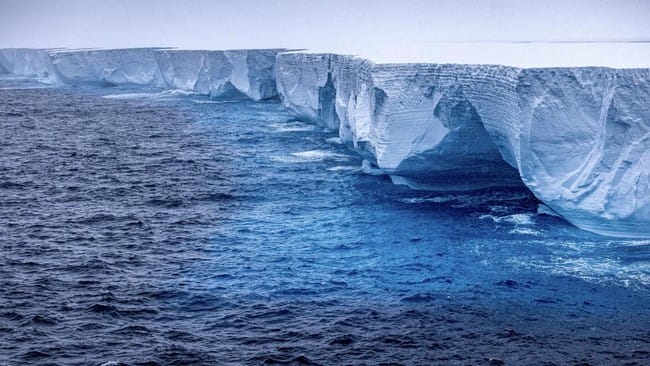South Georgia — The massive iceberg A23a, one of the largest on Earth for nearly four decades, is now breaking apart into several huge fragments. Scientists are warning of serious ecological consequences as the megaberg disintegrates amid rising ocean temperatures and shifting Antarctic currents.
Originally covering 3,672 square kilometers and weighing around 1.1 trillion tons, A23a has now shrunk dramatically to about 1,700 square kilometers — roughly the size of Greater London. “A23a is breaking apart rapidly, releasing large fragments, each classified as a major iceberg,” said Andrew Meijers, an oceanographer at the British Antarctic Survey (BAS), in an interview with CNN.
For over 30 years, A23a remained grounded on the Weddell Sea floor after calving from the Filchner-Ronne Ice Shelf in 1986. Its movement only began in 2020, triggered by basal melting that loosened it from the seabed. Since then, the iceberg has been caught in Taylor Column — a swirling ocean eddy — before resuming its drift. It is now being carried by the powerful Southern Antarctic Circumpolar Current Front (SACCF) toward the waters surrounding South Georgia.
This follows a familiar pattern seen with other megabergs such as A68 and A76, which also disintegrated in the same region. However, A23a had survived far longer before beginning to fracture. Its breakup also means it is no longer the world’s largest iceberg, a title now held by D15a, spanning about 3,000 square kilometers near Australia’s Davis Station.
Scientists believe the disintegration of A23a will continue over the coming weeks as warmer waters and the onset of the Southern Hemisphere spring accelerate the process. “We expect the calving to continue, breaking A23a into smaller fragments too small to monitor,” Meijers noted. Although iceberg breakup is a natural phenomenon, he added, there is insufficient data to confirm whether such events are becoming more frequent due to climate change.
What is certain, however, is that Antarctica’s ice sheets have lost trillions of tons of ice over recent decades, largely due to warming oceans and shifting currents — a trend that could contribute significantly to global sea-level rise. “Human-driven climate change is causing profound shifts in Antarctica, with the potential to accelerate sea-level rise,” Meijers warned.
Researchers aboard the BAS polar research vessel RRS Sir David Attenborough have collected water and sediment samples near A23a’s current location to assess potential impacts. “The massive release of freshwater could significantly affect organisms on the seafloor and in surrounding waters,” a BAS spokesperson said. Scientists stress that understanding the ecological consequences of megabergs is increasingly critical, as large icebergs near South Georgia may become more common in a warming world.









